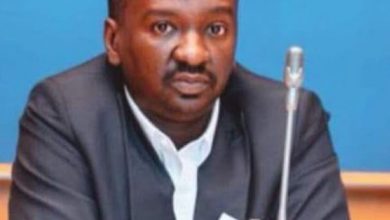An Unstable Transitional Period: The Transformations of the Hybrid Coalition in Sudan (1-6)

By: Hassan Elhag Ali Ahmad
Abstract: This study aims at analyzing the turmoil that befell the transitional period in Sudan after the December 2019 uprising. It focuses on the impact of the transformations that occurred on the hybrid coalition that was formed to manage the transitional period. This coalition consists of three components: the military establishment, with its two parts, the armed forces and the Rapid Support Forces, the civilian coalition, and the armed movements. The study assumes that the transformations that this hybrid alliance underwent, including splits, the formation of new alliances, and the reproduction of alliances contributed to the decline of the transitional period. This study believes that the dynamics of contentious politics have dominated the political process. It pays particular attention to the mechanisms and processes that influence the actors in a dynamic and a vibrant political environment. Moreover, it focuses on the technique of conflation, multiple targeting of actors at the same time, zero-sum interaction, and employing ideology in the process of building and dismantling alliances.
Keywords: Transitional Period, Contentious Politics, Alliances, Hybrid, unstable.
Introduction
Upon the overthrow of Omar Al-Bashir’s regime, following the December 2018 uprising, the leadership of the transitional period was formed, after a difficult struggle, from a widespread coalition that included a civilian component represented by the Forces of Freedom and Change (FFC), whose membership exceeded a hundred political organizations, parties and groups, and a two-part military component. Two contenders are the Armed Forces and the Rapid Support Forces (RSF). This coalition was later joined by the Darfur armed movements after the signing of the Juba Peace Agreement. This coalition was based on a minimum consensus, as components of it participated in overthrowing the Bashir regime, while other components joined the FFC. This coalition agreed on a hastily drawn up constitutional document and a three-year transitional government. Only a few months passed when cracks began to appear in the existing coalition, and withdrawals were announced. The Professionals Association split, as did the Freedom and Change Alliance, and the military component turned against yesterday’s allies before fierce battles took place between its two sides. The Sudanese case represents uniqueness in cases of transitional periods, as it was based on a military-civilian alliance whose components were dominated by diversity and conflict in interests, especially within the military component. What also distinguishes the Sudanese case is the occurrence of rapid and sudden shifts in the internal composition of the coalition linked to external and internal influences. This study aims to analyze the transformations that occurred in the alliances of the transitional period, and the splits and formation of new alliances that emerged from their framework, were hostile to them, or reproduced them and in one of their transformations led to an explosion of violence in Sudan. The study is based on the premise that what has characterized Sudan, for three decades or more, is the predominance of contentious politics. This policy focuses, in one of its approaches, on the dynamic relationships that exist between actors. Instead of focusing on actors, specific movements or organizations, attention is focused on processes and mechanisms in a dynamic and effective political environment. As the environment is alive and interactive, the transformations that occur in it change the relationships, and then the mechanisms and later the process. Instrumental relationships change connections between people, groups and networks. The study also assumes that one of the transformations of the coalition that led the transition is considered a critical juncture, which led to the outbreak of war in Sudan. The term juncture refers to a period “in which the influence of structural factors – economic, cultural, ideological and organizational – on political action weakens for a relatively short period, leading to an expansion of the options of powerful political actors during this short period.” As a result, the outbreak of war marked the country’s entry into a new political phase that would be unlike its predecessors.
The study uses Process Tracing methodology. It is considered the most appropriate for analyzing the transformations that occurred in the leading coalition of the transitional period and the alliances that emerged from it and those opposing it, and because the study focuses on analyzing the transformations in the formation of alliances as a mechanism in the political process. Trace analysis analyzes the paths of political change and attempts to determine its causes; Therefore, it requires an adequate description of the phenomena observed at each step in these pathways, as a basic building block in tracing the processes under study, on the basis of what David Collier called Intensive Description, Sequence Analysis is where the results and outcomes of the phenomenon are explained by referring to the events that unfold over time, and referring to the sequence of causal factors associated with the phenomenon. With these considerations, the trace analysis enables us to identify the critical turning points in the movement of the transitional period in Sudan, considering that turning point is the country’s entry into the war.
In collecting data, we relied on primary sources, which included newspapers, videos, and documents, in addition to secondary sources that included books, articles, and analytical reports that dealt with the Sudanese situation during the transitional period. On this basis, we do not build a Variable Based Explanations, such that we test whether the effect we observe in the dependent variable matches the change we observe in the value of the independent variable. Rather, we rely on an explanation based on mechanistic explanations, which goes beyond the aforementioned consistency. It determines what brought about the consistency in similarity between the supposed cause and effect. In such an interpretation, mechanisms are not causes, but rather causal processes that operate on the path between cause and effect, and can be measured by the repetition and frequency observed when the mechanism linking them occurs. We use this interpretation in the current study, given that the alliances that emerged during the transitional period in Sudan produced a number of methods, such as aggregation and zero interaction, that can be measured directly through the field study, and this approach has been applied before in studies on the formation of alliances. In another study on the logic of violence in civil wars, Stathis Kalivas pointed to the role of alliances as an effective mechanism in them. For him, violence was not a result of the civil war, but rather he considered it a process linking the central rifts with the actors at the local level in the peripheral areas. The basic mechanism linking the center and the peripheries is not a general social cleavage linking the two parties, but an alliance between people from the center and the peripheries with little in common. The model on which Kalivas’s book is based on interaction, which focuses on the relationship between actors.
This study seeks to measure the mechanism of alliances and methods used in the transitional period and which contributed to the transformations witnessed in this period. It borrows from Anne Mischi the method of grouping used by those who want to build a coalition, and refers to the expansion of common goals and projects so that the largest number of members can join it, and the method of targeting multiple actors at the same time by focusing the discourse on common issues and downplaying issues of difference. The study adds to these two mechanisms that contributed to alliance splits or the building of alliances hostile to existing alliances, which are: the zero-sum engagement mechanism, which indicates that any gain achieved by a political party is achieved by the loss of the other party, and the mechanism of employing ideology, and ideology refers to “the core beliefs of a group and the members of that group.” It can be traced through discourse which includes text, speech, oral interaction and communication. This study observes the recurrence caused by the above-mentioned mechanisms and analyzes the succession during the transition period.
After examining many of the concepts that we employ in the study and explaining their theoretical implications, we address the dynamics of the transitional period and then devote space to analyzing the impact of the Juba Peace Agreement on the alliances that emerged after it. After explaining the roadmap for the new alliances, we will explore the path towards the coup and the armed violence that broke out in Sudan. Then we will consider the implications of the results of the analysis at the theoretical and practical levels.
The study traces the transformations that occurred in the parent alliance, and classifies the alliances that emerged from it on the basis of their political identity. It deals with alliances that were not part of the grand coalition, but were created by the political environment in which it worked. The study initially examines the alliance of the FFCand its alliance with the military and armed movements in a hybrid alliance, and then analyzes the impact of the alliances that followed after that on the transitional period, which are de facto, radical, immediate, expanded, and zero-sum change. In this way, the study develops the theoretical framework of Contentious politics in order to apply it to the formation of political alliances and their transformations in transitional periods, by studying the mechanism of these alliances and the methods they produced that are assumed to have influenced the formation of alliances. These methods enable us to learn about how contentious politics interacts in Sudan, through building, dissolving and reproducing alliances. Thus, the study seeks to contribute to understanding the dynamics of transitional periods, by studying the emergence of alliances and their transformations.



